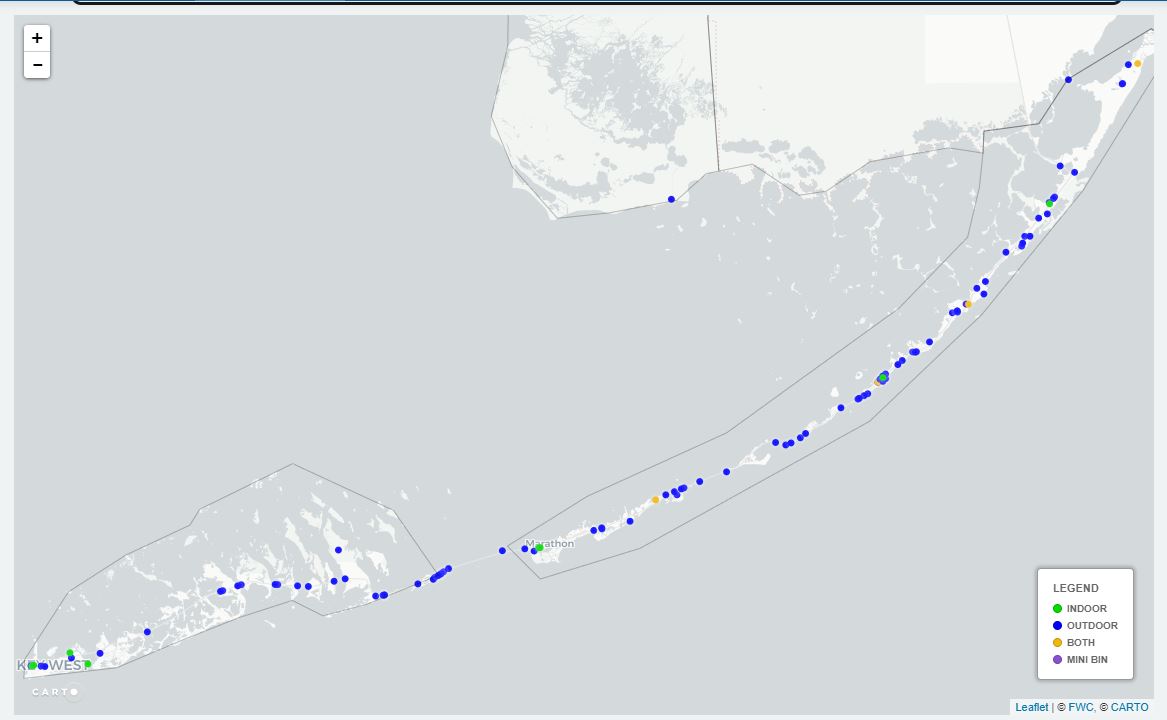The Monofilament Recovery and Recycling Program (MRRP) is an innovative statewide project dedicated to reducing the environmental damage caused by discarded fishing line. MRRP aims to educate the public on the problems caused by monofilament line left in the environment, encourage recycling through a network of line recycling bins and drop-off locations, and help citizens host volunteer monofilament line cleanup events. The program depends on state-wide partnerships as the key to its success.
Goals
Long-term goal 1: Heighten awareness about the negative impacts that fishing line debris has on human welfare, marine life, and water quality.
Long-term goal 2: Decrease the amount of fishing line entering and remaining in the natural environment.
Long-term goal 3: Increase the amount of fishing line being recycled.
Strategies to reach these goals:
- Market and advertise using educational media that are appropriately designed to reach targeted audiences.
- Facilitate active participation in project activities by providing opportunities for targeted audiences to recycle fishing line, volunteer to check or adopt bins, and participate in debris cleanup events.
Final Objectives
Objective 1: Increase the number of outdoor recycling bins throughout the state.
Objective 2: Increase the number of tackle shops that are hosting Berkley line recycling receptacles.
Objective 3: Increase the number of monofilament line cleanup events throughout the state.
Objective 4: Increase attending education and outreach events specific to marine and wildlife conservation.
Objective 5: Distribute educational materials that include flyers and brochures to share with targeted audiences at events and presentations.
Monofilament – or “mono” for short – is a single strand of material that is made of a strong, flexible plastic that is clear or tinted many colors. It is one of the most popular types of fishing line used today.
Flexible—It is easy to use and works well for many fishing situations. This flexibility makes the line more manageable and easier to cast than stiffer lines.
Stretch—Mono stretches which gives it more forgiveness. If an angler’s line drags a stick or they set the hook too hard, mono compensates by stretching up to 25 percent or more. It also helps prevent the hook from tearing a hole in a fish’s mouth.
Shock Strength—Stretch should not be confused with shock strength, which is a fishing line’s ability to absorb energy. Shock strength comes into play when line has to withstand the sudden impact of a hard hooks being set or a big fish thrashing violently at boatside.
Sink Rate—Thanks to its near-neutral buoyancy, mono sinks slowly, making it a great choice for topwater lures and when anglers don’t want to accelerate the bait’s downward movement.
Color Palette—Mono is easier for manufacturers to tint than other types of line, so it’s available in a wider range of colors. Anglers can choose from stealthy options such as green, blue or clear—or spool with high-visiblity shades.
Knots—Mono is knot-friendly. Anglers can use a variety of strong, easy-to-tie knots without sacrificing the strength of the line.
Inexpensive—Mono is the most affordable of all line choices. Considering the critical role line plays in fishing, it is one of the best investments an angler can use.
Ease of Use—Thanks to a combination of manageability, stretch, easy knot tying and other fishing-friendly features, mono is the best fishing line for ease of use. This makes it a wonderful choice for everyone from first-time anglers to seasoned veterans.
Derelict fishing gear refers to nets, lines, crab/shrimp pots, and other recreational or commercial fishing equipment that has been lost, abandoned, or discarded in the marine environment. Modern gear is generally made of synthetic materials and metal, which means it can persist for a long time.
Marine debris is persistent solid material that is manufactured or processed or indirectly, intentionally or unintentionally, disposed of or abandoned into the marine environment. There is no body of water that does not deal with this problem. A majority of the trash or debris comes from storm drains and sewers, as well as from shoreline and recreational activities. Marine debris is a threat to our environment, navigational safety, the economy, and human health.
Fishing Line Bin Locations
Do you have fishing line that you would like to recycle or do you want to know where the closest recycling station is to where you live or vacation? Use our interactive map to search by county, type of bin, and GPS location. Click on the photo and it will take you to a map you can Zoom in and click on points to learn more about each specific bin location!

